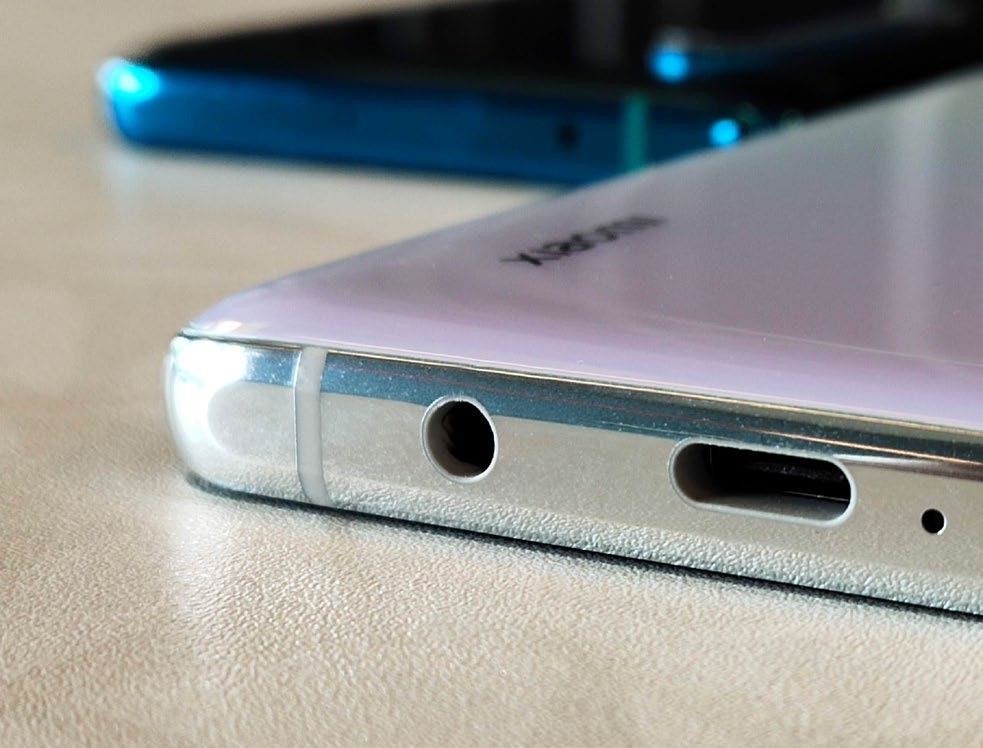Xiaomi Mi Note 10/10 Pro.


Maybe it’s true that there’s no more room for innovation in phone design. The Mi Note 10 is yet another one of these unashamed clones, this time of the Huawei P30 Pro, and who can say whether that’s for the best?
Colour choices range from a flamboyant Glacier White to a more classy Aurora Green, and of course, a relatively uninteresting Black. The former colourway packs a beautiful gradient that glows pink and blue depending on your viewing angle, but after only a week, I noticed a long scratch on its bare-metal edge along the top (all phones were kept in their supplied TPU cases).
The one thing Xiaomi couldn’t clone from the P30 Pro is the weight. The Mi Note 10 is a hefty 208 grams, 16g more than the P30 Pro, and two grams heavier than the already huge OnePlus 7 Pro, which has a larger display. The reason? The gargantuan 5,260mAh battery.
There’s a sort of same difference between the 6.47-inch FHD+ curved AMOLED displays on the Huawei P30 Pro and the Mi Note 10: while they both look identical at first glance, the former’s are built by LG Display and BOE, and the latter’s by Visionox. And for some reason the Visionox panel seems more vibrant and appealing than what’s in the Huawei phone.
In terms of software, whether Xiaomi’s MIUI has aged well is the subject of much debate, but at least in its 11th iteration, and layered atop Android 10, it’s quite acceptable aesthetically.
Two things, though. First, although it’s been talked about before, the sheer number of ads in MIUI’s system apps always comes as a rude shock, and MIUI’s aggressive battery management is just as annoying.
Now, is a high-end midrange processor good enough for a groundbreaking camera phone?

Most usable 50X zoom yet with the highest level of detail.
Both Mi Note 10 and 10 Pro have the same Qualcomm Snapdragon 730G chip; the former having 6GB RAM and the latter, 8GB. After extended use, the non-Pro version does lag a little more, but otherwise, both phones behave almost indistinguishably from flagships, and this compliment testifies to the power of the Snapdragon 730G and its two high-end Kryo 470 Gold cores.
Xiaomi collaborated with Samsung to be the launch customer for its ISOCELL Bright HMX 108-megapixel sensor, which measures a relatively large 1/1.33 inches - that’s almost 2 cm - across! This is situated behind a 7-plastic lens group with an aperture of f/1.69, while the Pro version has 1 extra lens element. There’s also optical image stabilisation (OIS).
Since 108MP shots on a regular basis would take ages to process (and I’m coming to this), the main shooter downscales the 108MP output by default, combining 4 pixels to give regular 27MP shots.
Processing, however, doesn’t always seem to make the most of this. Both phones were inconsistent with their processing, tend to underexpose images slightly, and colours are generally more muted than some of the competition - say, Samsung and Huawei. The dynamic range is decent, but not as good as today’s 48-megapixel phones.

Headphone jack, oh how rare you are these days.
A true 108MP Ultra HD mode exists, but here’s where we come to one of the Mi Note 10 series’ biggest flaws: The camera simply isn’t fast. When starting up, there’s noticeable viewfinder lag, probably as the buffer deals with the inrush of 108 megapixels of image data. This also means the shot-to-shot time is pretty slow, taking some 2 seconds (yes, 2 seconds!) in normal photo mode, and a positively glacial 5 seconds in 108MP Ultra HD mode.
Its 50X hybrid zoom is usable, but not stellar. By the time you read this, Samsung’s own 108MP shooter will be out with a 100X zoom, but it still counts for something, no?
The wide-angle lens is among the best we’ve seen though. It autofocuses and has very nice dynamic range and colours. The 2MP macro camera on the other hand, is by far the most underwhelming of the five shooters.
If you can accept that these are mid-rangers blessed with a single groundbreaking feature, you’ll love the Mi Note 10. At around $740 on the street now, the 10 Pro is about a hundred bucks less than a Huawei P30 Pro. However, if you believe that headliner features should come with headliner specs all round, this duo is not for you.
CONCLUSION
Capable mid-range phone but camera lags drag down its flagship features.


AT A GLANCE
PROCESSOR Qualcomm Snapdragon 730G
MEMORY 6GB/128GB (Mi Note 10) , 8GB/256GB (Mi Note 10 Pro)
CAMERAS 108MP+12MP+5MP+ 20MP+2MP rear / 32MP front
DISPLAY 6.47-inch 3D curved AMOLED
BATTERY 5,260mAh
PRICE $699/$799 (Mi Note 10/10 Pro)























